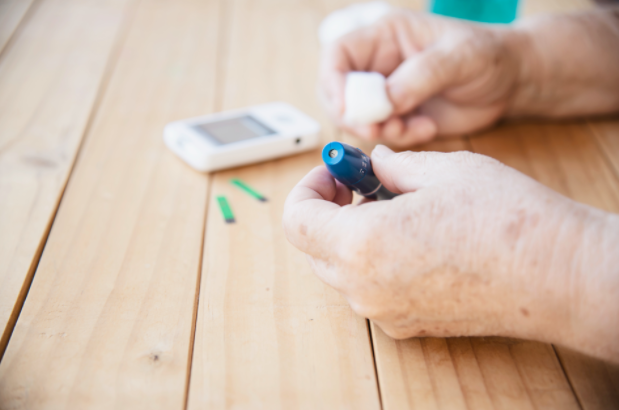The anti-diabetes drug insulin is the subject of many false beliefs and misconceptions, when in fact, it may well be one of the most notable medical innovations in the past hundred years.
The discovery of the insulin molecule in 1921 ignited a century of groundbreaking innovations that saved lives and ultimately gave hope to patients living with diabetes. During the 1960s, medical experts developed a greater understanding of this chronic disease, differentiating between type 1 and type 2 conditions.
With this newfound understanding, a new generation of medical devices and therapies emerged. From the first type of insulin, to the first longer-acting variant, and more innovations, novel types of insulin have now become available to patients, giving them more freedom and flexibility to work with their doctors in the management of their disease.
A good understanding of insulin, what it does, and how it affects the body, is essential to optimal health and proper diabetes management. Here are some myths vs facts you need to know:
Insulin myths vs facts
Myth: Using insulin means I am in the critical stage of diabetes.
Fact. The use of insulin is not indicative of an end-stage severe disease. Research study shows that an early start with insulin can prevent possible complications. In the recent study done in 6 countries including Philippines, patients who were started on co-formulation insulin from oral medications had a decrease of HbA1c by 2%, denoting better glucose control with insulin therapy, and thereby, better disease control of diabetes.
Real world data analysis of 186 Filipino living with diabetes showed significant reduction in HbA1c after using co-formulation insulin. The study investigated the efficacy and safety of co-formulation insulin in real world patients, and how it can control blood glucose levels in this setting. The study collected information on how co-formulation insulin drug works in real world patients and how it can lower blood sugar levels. Participants received co-formulation insulin drug as prescribed to them by their doctor and underwent clinical observation for 6 to 9 months.
Insulin does not indicate a severe case of diabetes. It provides a better option to control it.
“Your diabetes treatment is your best friend. If you know how to handle your treatment, doors open in life,” shared Enzo, 22, living with diabetes for 14 years.
—–
Myth: Insulin is dangerous.
Fact: The insulins used today acts in a very similar way to those made by the body. Diabetes can be controlled effectively with insulin.
“I was happy because my blood sugar level went down. The constant urination went away as well as the continuous hunger and thirst,” noted Nelia, 66, living with diabetes for 17 years.
Apart from significant decrease in HbA1c, participants of the study also demonstrated desirable effects regarding weight management following the switch from oral anti-diabetic treatment to injectable insulin.
—–
Myth: Insulin injection is painful.
Fact: Although nobody likes getting shots, most people are surprised how little an insulin injection hurts as its needles are very thin and small. Medical innovations and new treatments are being done to make insulin injectable less painful such as fine needle features which can enhance flow rates and reduce dosage force.
—–
Myth: Insulin is very expensive.
Fact: Diabetes complications are expensive especially if left untreated. Today, there are new medicines and approaches that are more accessible to patients. Healthcare companies are finding ways to ensure equitable access to lifesaving drugs like insulin.
“As a working youth, it’s cheaper now and it’s easier to access,” Enzo related.
—–
Myth: Insulin will alter my life.
Fact: There is a widespread belief that once a person is diagnosed with diabetes they cannot live on their own, travel, or eat at restaurants. There is no truth in any of these.
The second most common reason for initiating or switching to insulin among Filipino physicians is its flexibility in dosing regimen, based on the study. Co-formulation insulin can be flexibly given at the biggest meal of the day and can lessen injection burden by having 2 insulins in 1 pen.
Enzo and Nelia both shared how insulin use changed their life for the better.
“When I first had diabetes, my HbA1c was in double digits. Right now, I am happy to say it’s at 4. And that’s the lowest I have gotten so far,” added Enzo.
“I live freely and my body is still strong,” Nelia emphasized.
Diabetes care is Novo Nordisk’s focus. As a trusted healthcare partner, Novo Nordisk is one with the Filipino family in defeating diabetes through proper information, timely health management and medical innovation.
“We are going beyond medicine to develop new solutions,” said Kristanz Nillo, Insulin and Biopharm Business Unit Director Novo Nordisk Philippines.
This year, Novo Nordisk launched its Insulin 100 campaign to showcase the remarkable discovery of insulin and its continuous development to give hope to patients living with diabetes.
“In the next 100 years, we are committed to not only expanding access but also prevent and maybe cure diabetes,” shared Cihan Serdar Kızılcık, Vice-President and General Manager, Novo Nordisk Philippines.
With this year’s commemoration, Novo Nordisk demonstrates that its past honors its commitment to fighting diabetes and even going beyond medical innovation for years to come.
References:
1. Hormone Health Network. What is insulin? Retrieved from: https://www.hormone.org/your-health-and-hormones/glands-and-hormones-a-to-z/hormones/insulin. Accessed on August 29, 2021.
2. American Diabetes Association. Insulin Myths and Facts. Retrieved from: https://clinical.diabetesjournals.org/content/25/1/39. Accessed on August 29, 2021.
ADVT













































